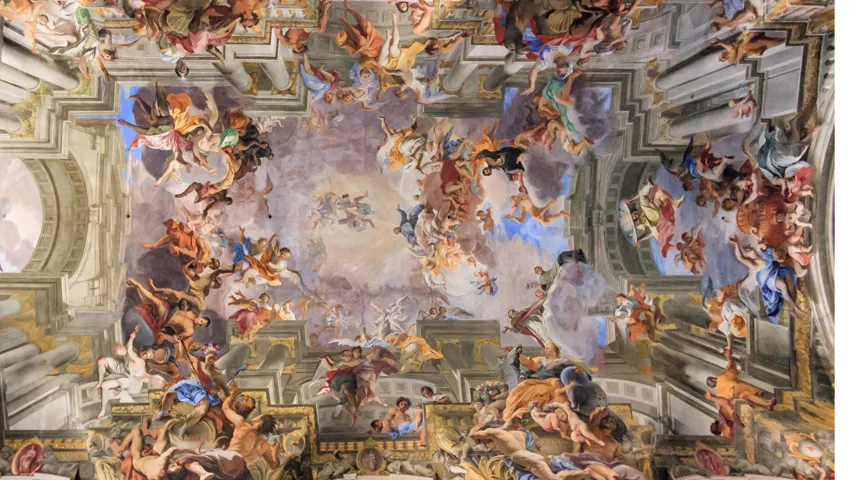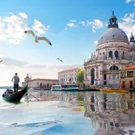Basilica of Sant'Eustachio
According to tradition, the basilica of Sant'Eustachio was founded in the 4th century by the Emperor Constantine on the site of the saint's martyrdom. However, the church is not documented until the 8th century: the only certainty is that we are in the area of the Neronian-Alexandrine Baths, erected by Nero in around 62 and rebuilt by Alexander Severus in 227, from where the two ancient columns leaning against the side of the building, along Via di Sant'Eustachio, originate. We know that the basilica was restored and enlarged in 1196, when the Romanesque bell tower was built, featuring bifora windows that are partly walled in.
The present-day appearance of Sant'Eustachio, however, is due to major restructuring, or rather, rebuilding in the first half of the 18th century, the period from which the bronze and polychrome marble high altar by Nicola Salvi and the baldachin above it, created by Ferdinando Fuga in 1746, also date. The work was essential to save the church from the infiltration of water and floods from the Tiber, which were frequent and dangerous. On the façade, towards the corner of Via di Sant'Eustachio, a plaque commemorates the level reached by the river during one of its worst floods, in 1495. The upper portion of the façade is crowned with a deer's head because, according to hagiography, Saint Eustace was converted during a hunting expedition, when he saw a glowing cross (or, according to other sources, the figure of Christ) between the antlers of a deer.



















